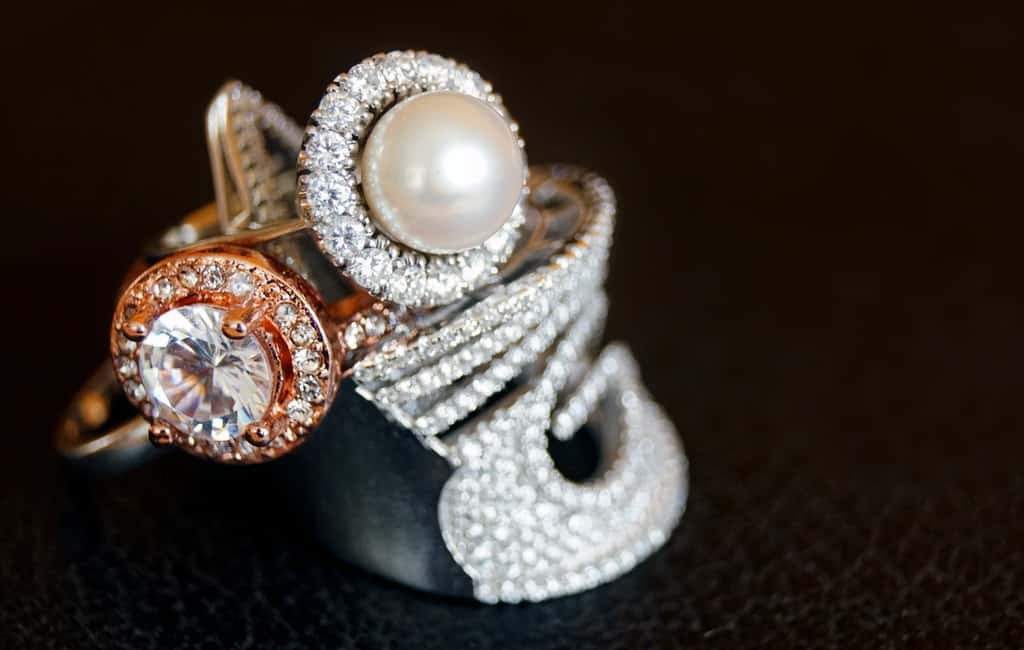Diamonds are one of the most popular gemstones in the world (and perhaps, the most popular). They are made up of the common element known as carbon – millions upon millions of its atoms – which has been subjected to a very high degree of pressure and heat, which usually takes place over several thousands (and perhaps millions and billions) of years. Diamonds are precious stone, but they do far more than just sparkle when light shines on them; they are also the hardest substance known in the entire planet, with the highest known melting point. This particular property (hardness) also makes them useful industrially.
TYPES OF DIAMONDS
There are different types of diamonds, all of which can only be found in very few places around the world. Generally, diamonds can only be found in only about 35 known countries in the planet. Different types of diamonds are also found in different places around the world. The various types of diamonds include the following:

- Red diamonds
These types of diamonds are formed due to a rare defect in the lattice formation of the carbon atoms which make up a diamond, during its formation process (and not as a result of impurities). Since the formation of this red color in diamonds is not due to the presence of impurities, which means red diamonds are pure diamonds. They also happen to be the rarest types of diamonds in the world (and also some of the priciest kinds). A lot of the red diamonds in the global gemstone markets are usually mined from the Argyle Diamond Mine in Australia.
- Blue diamonds
These types of diamonds are usually formed due to the exposure of the carbon atoms that make up diamonds to the chemical element boron, while the diamond is still getting formed beneath the earth’s crust. Artificially, blue diamonds can also be made in laboratories by subjecting lab-grown diamonds to boron during their formation process.
- Green diamonds
These kinds of diamonds are usually formed in nature when diamonds get exposed to radiation, while they are still being formed. Green diamonds are rare, which puts them in high demand within the jewelry-making industry, globally. However, they are not as rare as red diamonds.
- Yellow diamonds
These kinds of diamonds are usually formed naturally when a diamond is exposed to high quantities of nitrogen while it is still being formed beneath the earth’s surface. Yellow diamonds sparkle brilliantly, especially when they have been properly cut and polished. Many people have likened this brilliance to natural warmth, and this is what makes them so desirable (particularly in the global jewelry industry).
- Purple diamonds
Purple diamonds take a long time to form in nature (about 1 billion years at the absolute minimum). They are usually formed due to the exposure of a diamond to the elements hydrogen and boron while it is still in its formation stage. Different shades of purple diamonds exist in nature and pricing is usually done in accordance to the intensity of the purple color (that is, the more intense the purple color is, the higher the price of the purple diamonds).

WHAT IS LAPIS?
Lapis lazuli or Lapis is a semiprecious gemstone that has a distinct deep blue color, which makes it of importance to jewelers and jewelry buyers all over the world. However, some people around the world may see this description of Lapis lazuli (as a gemstone) as a gross overstatement, since it is more often described as a rock.
Lapis lazuli is a metamorphic rock that is made up of lazurite, which is its major mineral component. Being a metamorphic rock means that over time, Lapis lazuli would start exhibiting changes as a result of physical and chemical forces which have acted on it (which is not a major characteristic of precious stones).
Lapis lazuli has a long and rich cultural history in the world. It has been mined from as early as the 7th millennium BC in the Sar-i Sang mines, as well as in other regions such as Badakhshan; a province located in northeast Afghanistan.
Back in around 7570 BC, Lapis lazuli was mined widely in Bhirrana which is the oldest site of Indus Valley Civilisation (also known as Indus civilization or Harappan civilization); a great civilization that was very prominent during the Bronze Age. During this era, much value was placed on the semi-precious stone (Lapis lazuli), as a result of its very striking blue color. Beads – and other items used in jewelry making – were made out of the semi-precious stone, and it became an integral part of many people’s ancient cultures because it was used greatly in the production of a lot of ceremonial items such as burial masks.
WHAT ARE THE PROPERTIES OF LAPIS LAZULI?
Lapis lazuli is an intense blue color that shines well when polished. And though this stone is hard, it can also be quite easily carved and polished into articles like jewelry, statues, ornaments, mosaics, boxes and vases. In modern times, Lapis lazuli can be made artificially in labs using a process known as the Gilson process.
HOW DO YOU FIND LAPIS DIAMOND?
Lapis lazuli possesses some degree of hardness; however, it is nowhere near as hard as diamonds (which are the hardest known substances on the planet with the highest melting point). For this reason, Lapis lazuli cannot be subjected to the same amount of industrial processes like diamonds can.
Also, while Lapis lazuli shines well when polished, its brilliance does not come close to that of diamonds which have been properly cut and polished.
These two stones vary vastly in many other aspects and areas, which include the sites where they are formed naturally, their chemical composition and cultural significance. In nature, there is no such thing as a Lapis diamond. However, this logic does not apply to the world of mine-craft.
In minecraft, Lapis lazuli can be used to find diamonds by following the gold blocks, as Lapis lazuli ore is usually found near diamond ores. Conversely, diamonds can also be used to find Lapis lazuli by mining in the opposite direction when diamond ores are discovered first.

